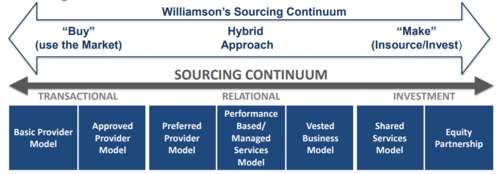Performance-based contracting
Abstract
In this article a review of performance-based contracting will be presented. Performance-based contracting (PBC) is a product support strategy in which the procurement model is based on clearly defined objectives and key performance indicators (KPIs) [1]. These are the driving forces to encourage behaviours that achieve the required project objectives and procurement. Specific KPIs such as cost, quality and completion are the basis of project consequences, in the form of risk and reward, for the involved contract participants. The concept of KPIs will also be studied in this article along with a brief description of what a contract is in general. In performance-based contracting the incentivized performance measures serve the purpose of motivating the supplier to improve performance and cost effectiveness through enhanced internal practices. This is different than the more traditionally used transaction-based contracting, also known as waterfall approach, in which payments are made based on completion of agreed milestones and project deliverables. Roughly speaking the key difference between the two methods lies in the fact that performance-based contracting describes the work in terms of the required results rather than "how" the work should be accomplished [2].
Contents |
Contract
In order to provide some background to the idea of performance-based contracting it can be useful to first get a sense of what a contract itself is. A contract can be described as a promise made between two or more persons or organisations in which each participating party agrees to do certain things.[3] The contract is a written list which describes the agreed upon items and it is therefore useful because it can be used to:
- State what is expected of the agreeing persons or organisations
- Protect the needs and rights of the agreeing parties
- Ensure encountability of the promises made by the agreeing parties
- State the consequences if the promises made are not fulfilled
KPI
The Seven Sourcing Business Models
Performance-based contracting is a part of the so-called Seven Sourcing Business Models which are fundamental supply business models that are established with the supplier to support the purchase requirements. The models are useful within procurement management and can be used to create value and manage risk in various different ways.
A fundamental question a company or organisation needs to ask itself is how to obtain the goods and services required to run the business. On the one hand it they can be "bought" on the marked externally or on the other hand they can be "made" via insourcing internally in the company. A hybrid approach also exists in between the two extremes. This is illustrated in Figure 1.
Depending on the sourcing situation a given organisation or company is in, the most appropriate Sourcing Business Model should be chosen in order to optimize for the business environment the organisation or company is navigating.
As seen in Figure 1 the Sourcing Business Models include
- Basic Transaction Provider
- Approved Provider
- Preferred Provider
- Performance-Based Agreement
- Vested Business Model
- Shared Services
- Equity Partnerships
https://www.sig.org/docs2/WS05_Seven_Sourcing_Business_Models_ForeFront_Group_2016_04_16
These models fall within the so-called sourcing continuum which can be described as being either transactional, relational or investment. This refers to the relationship model which determines how you wish to influence or formally control the supply source.
A more detailed description of each model is provided in the following sections:
- Basic Transaction Provider
lo
- Approved Provider
- Preferred Provider
- Performance-Based Agreement
- Vested Business Model
- Shared Services
- Equity Partnerships
